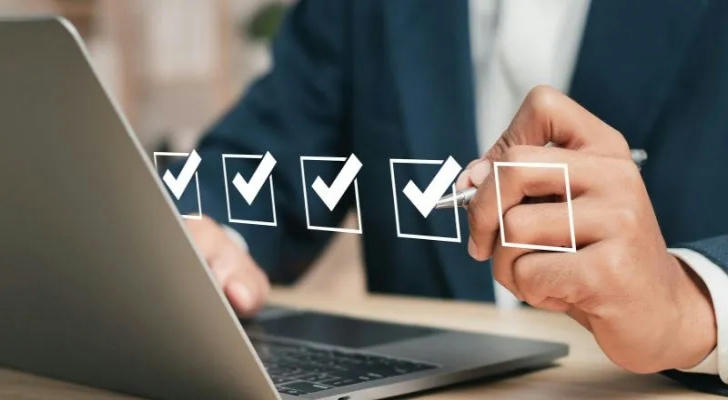🚀 From Idea to Income: Navigating Small Business Loans in the U.S.
Starting a business in the United States has never been more accessible—or more competitive. Whether you're planning to open a food truck in Austin, build a mobile app in Seattle, or launch a handmade jewelry brand out of your garage in Des Moines, turning your idea into income often requires more than just passion. It requires capital.
And that’s where small business loans come in.

In this guide, we’ll unpack the nuts and bolts of small business loans: what they are, how they work, how to qualify, where to apply, and how to avoid common pitfalls. Whether you're just drafting your first business plan or already turning a profit, this article is designed to help you navigate the small business lending landscape like a pro.
💼 Why Small Business Loans Matter More Than Ever
America is a land of entrepreneurs. According to the U.S. Small Business Administration (SBA), there are over 33 million small businesses in the country, employing nearly half of the private workforce. But while the spirit of innovation is strong, the financial barriers to entry can still be steep.
Even a lean startup requires funds—for equipment, inventory, a website, legal fees, rent, or simply to keep the lights on during the early stages. According to the Federal Reserve’s 2023 Small Business Credit Survey, 43% of small businesses applied for some form of external financing in the previous 12 months, with working capital and equipment purchases being the top two reasons.
Small business loans help bridge the gap between great ideas and sustainable operations. They give you the resources you need to build, grow, and stay competitive.
📟 Common Types of Small Business Loans
There’s no one-size-fits-all when it comes to financing. Different loans serve different purposes, and understanding your options is critical to making the right choice.
1. SBA Loans (Small Business Administration)
SBA loans aren’t issued directly by the government, but they are guaranteed by it—meaning lenders are more likely to approve applications since the government backs a portion of the risk.
Popular SBA loan programs include:
7(a) Loan Program – General-purpose loans up to $5 million.
504 Loan Program – For purchasing major fixed assets like buildings or machinery.
Microloans – Up to $50,000, often for startups or underserved communities.
Pros:
Lower interest rates Longer repayment terms Good for newer or less conventional businesses
Cons:
Extensive paperwork Longer approval time Requires strong credit and a business plan
Case in Point: Elena, a 29-year-old salon owner in Denver, used an SBA 7(a) loan of $150,000 to lease a storefront, buy styling equipment, and hire two stylists. With a repayment term of 10 years and a low fixed interest rate, she was able to break even in 18 months.
2. Traditional Bank Loans
These are typically offered by national and regional banks. They’re usually harder to qualify for but offer competitive rates and terms if you meet their requirements.
Best for: Businesses with good credit history and strong financials
Pros:
Low interest rates High loan amounts Established institutions
Cons:
Strict approval standards Requires collateral Can take weeks or months to process
Example: A hardware store in Minneapolis secured a $250,000 bank loan after three years of consistent profits. The funds were used to expand into e-commerce and hire a digital marketing team.
3. Online Lenders and FinTech Loans
Companies like OnDeck, Fundbox, and BlueVine offer fast approvals and flexible requirements—though sometimes at higher interest rates.
Best for: Businesses that need quick cash or don’t qualify for traditional loans
Pros:
Fast application and approval Less strict credit requirements Ideal for short-term needs
Cons:
Higher interest rates Shorter repayment periods
Example: Jake, a freelance video editor, used a $15,000 loan from an online lender to buy new production equipment. Though the interest rate was higher, the loan was approved in 24 hours and helped him land larger clients.
4. Business Lines of Credit
A business line of credit works more like a credit card than a loan. You get access to a set amount and only pay interest on what you use.
Best for: Managing cash flow, unexpected expenses, or seasonal dips
Pros:
Flexible borrowing Reusable credit
Cons:
Lower borrowing limits Possible maintenance fees
Example: A catering company in Atlanta uses a $30,000 line of credit to cover ingredient purchases ahead of large weekend events.
5. Merchant Cash Advances (MCAs)
An MCA is not a loan. A lender gives you a lump sum in exchange for a percentage of your daily sales.
Best for: Retail or service businesses with high, regular credit card sales
Pros:
Fast cash No collateral required
Cons:
Very high costs Daily repayments impact cash flow
Example: A Miami-based smoothie bar used an MCA to fund a second location. While it provided fast funding, the aggressive repayment terms significantly affected short-term profitability.

📈 What Lenders Look For
Getting approved for a loan isn’t just about a good idea. It’s about proving you’re a safe bet. Here’s what lenders typically evaluate:
1. Credit History
Both personal and business credit matter. Scores above 680 are ideal. New businesses may rely heavily on the owner's credit.
2. Business Plan
A well-structured plan shows lenders you're prepared. It should include:
Revenue models Expense forecasts Market analysis Funding purpose
3. Revenue and Cash Flow
Established businesses must provide tax returns or financial statements. Startups should have detailed projections.
4. Collateral
Some loans require assets to back the loan. This can be inventory, real estate, or equipment.
5. Time in Business
More years in business = more confidence from lenders. Startups may still qualify, but the process is harder.
📍 How to Choose the Right Loan
Ask yourself:
How much do I need? How fast do I need it? What am I using it for? Can I afford the repayments?
Use loan comparison tools from NerdWallet or Fundera to evaluate multiple offers.
⚠️ Pitfalls to Avoid
❌ Borrowing Without a Plan
Never take a loan "just in case." Have a clear purpose and ROI estimate.
❌ Ignoring the APR
APR includes fees and interest. It gives a true cost comparison.
❌ Accepting the First Offer
Compare multiple lenders. Ask about total repayment costs.
❌ Hidden Fees
Look for:
Origination fees Early repayment penalties Monthly maintenance fees
❌ Predatory Lenders
In 2021, the Federal Trade Commission reported a rise in "advance fee loan scams." One California bakery owner lost $3,500 to a fraudulent company promising "guaranteed approval."
🔧 Tools & Resources
SBA.gov – Lender match, loan guides, business templates SCORE.org – Free business mentoring from experienced entrepreneurs SBDCs – Localized business support centers NerdWallet – Loan comparison and calculators FTC.gov – Scam alerts and financial safety tips
📚 Real-World Example: Mia’s Bakery
Mia, a home baker from Michigan, had a growing customer base. To open a storefront, she applied for a $45,000 SBA microloan to cover renovations, kitchen equipment, and her first employee’s salary.
She spent two weeks compiling documents and got approved within a month. A year later, Mia’s Bakery is a community favorite and employs five people. The loan gave her the boost she needed.
🔮 What’s Next for Small Business Financing?
According to the National Small Business Association, digital lenders and community-focused funds are expanding access to capital. Additionally, pending legislation like the Small Business Lending Disclosure Act aims to improve transparency and protect borrowers from misleading loan terms.
The future of small business lending is faster, fairer, and more inclusive.

💪 Final Thoughts: Loans Are Tools, Not Crutches
A small business loan isn’t a magic wand. It won’t make your business successful on its own—but it can be a powerful tool to get you where you want to go.
So dream big. Plan carefully. And take that first step toward making your business vision a reality.
"The best way to predict the future is to create it." — Peter Drucker
